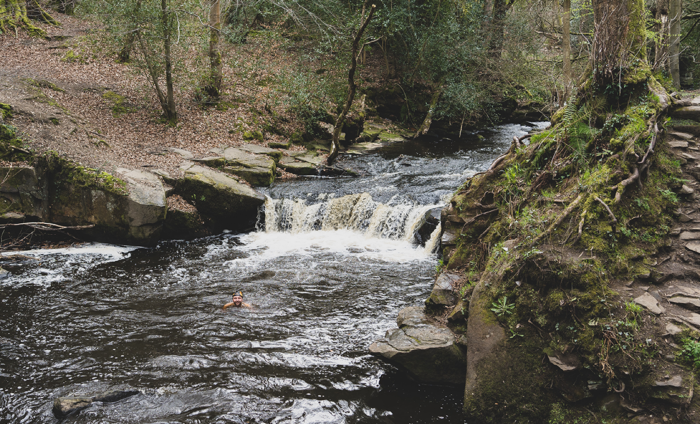
How to plan a wild swim
Want to plan your own swim adventure but don’t know where to begin? Dip Advisor Ella Foote explains everything you need know.
As we head into another busy bank holiday weekend with many people planning to travel to popular locations along the British coastline, wouldn’t it be lovely to escape the crowds and find a quiet spot for a dip? Here’s how to find and plan a wilder swim.
Invest in a proper map
Once you know the area you want to explore, you need a decent map of the area. While there are plenty of online mapping services, a traditional Ordnance Survey (OS) map is still my go-to when planning a swim. Google maps street-view and satellite maps can also be useful for understanding an area before you visit.
If you don’t know how to read a map, learn the basics. The things I look for mostly on an OS map are bits of blue (water), public footpaths, parking areas, and contour lines which represent hills, slopes and mountains. While a paper map is fun to spread out on the floor, the digital OS map subscription is excellent. I often use the plotting route tool to work out distance and time it might take to walk to a spot.
Right to roam
Access and right to roam laws and rules vary across the UK. You can walk on all public rights of way; they are marked with signs and arrows. On an OS map, they are clearly marked with green or pink dashed lines.
In England, Wales and Northern Ireland, you can access some land without having to use paths – this land is known as ‘access land’. Access land includes mountains, moors, heaths and downs that are privately owned. It also includes common land registered with the local council and some land around the coast path. In Scotland, everyone has rights of access over land and inland water throughout, with a few exceptions, as long as you behave responsibly. You can find out more on access by looking at the gov.uk website and Natural England.
As a general rule, if there is a public right of way, or navigation on a waterway, it is generally okay to swim from public access land. Where there is often difficulty is when private land is also adjacent to the water you want to swim in. This is especially complicated with river swimming. You may enter the water from a public footpath and plan to exit on one, but swim through private land. A landowner will own the half the riverbed and while no one can own water, they are responsible for it.
They can’t pollute or damn the water, so often lease it to angling societies and this can then become complicated for other water users and swimmers.
While trespass isn’t currently a criminal offence, you can be asked to leave and often landowners can be pretty grumpy about it. I advise if you find yourself in this situation, apologise and move on.
How do you like to dip?
Is this a leisure swim with friends or family – or a longer, more adventurous swim? Different locations will provide different types of swims. A river with plunge pools and paddling is a fun way to spend time with younger, or beginner swimmers.
Fancy stretching out your arms and legs? Look for a wider, deeper river. Although there are plenty of lakes, tarns, ponds and bodies of water to plunge into, many in England are on private land, so ensure you can access them for a swim. As for the coast, there is excellent public access to most of the UK coastline.
A good rule for more remote swims is that the further you must walk, the better the swimming spot. In general, people are lazy; if you can park a vehicle near water, you will meet more people wanting to picnic and dip their toes. Once at the water, be aware of your ability and experience: it is better to leave the water wanting more than not leave the water at all! Understand waterfalls, weirs and waves – which all impact how our bodies behave in water.
Be prepared
My favourite swims often include a journey. Starting in one place and walking to water, swimming back down a river or dipping in multiple spots. Simple things can make or break a swim. Charge your phone before you go and limit use to map reading or emergency. Invest in a small but useful first aid kit. On a summer’s day, you don’t need much more than some decent sun cream, a towel and your swimming suit.
Follow the basic outdoor swimmer rules
- Do your research before you go and ask locals about the area.
- Check the weather and conditions – wind, currents, flow, tide and sun all impact a swimming adventure, be prepared to cancel.
- Know where you will exit the water as well as enter safely.
- Ensure someone knows where you are or swim with others.
- Don’t jump or dive into a spot you haven’t visited before.
- Respect the area you are visiting. Take litter home, pick up litter you find. Don’t crowd small rural areas or obstruct roads/access with parking. Consider wildlife, flower and fauna.
- Trust your instincts, if something doesn’t feel or look right, it probably isn’t.






